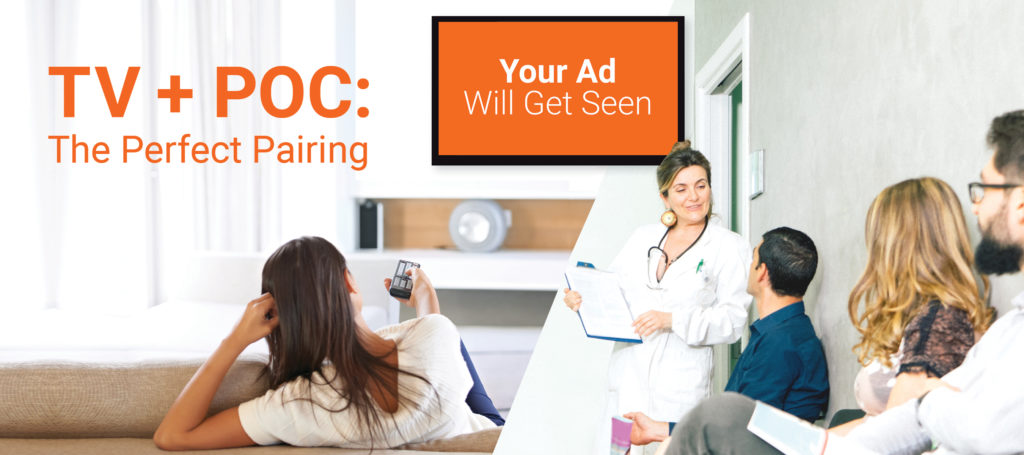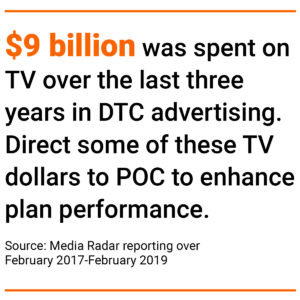Sponsored Content
 What’s the best pharma ad you see running on TV right now? I bet you could sing the jingle, but do you remember the specific brand? I’m the odd one that uses my DVR to skip TO the commercials – but you and I are not the average healthcare consumers. That’s why, despite the strength of TV, when it comes to messaging to patients, you have to pull that message through when they are going to be most receptive – in the doctor’s office.
What’s the best pharma ad you see running on TV right now? I bet you could sing the jingle, but do you remember the specific brand? I’m the odd one that uses my DVR to skip TO the commercials – but you and I are not the average healthcare consumers. That’s why, despite the strength of TV, when it comes to messaging to patients, you have to pull that message through when they are going to be most receptive – in the doctor’s office.
There are a multitude of rationale for your TV-driven media plan to include POC to complement it. Here are a few important points:
- Add POC to the mix, and every other channel benefits. Evidence shows POC can help lift the returns of not only TV, but other media in a plan as well. A recent Crossix study found net conversion rates and new patient starts were significantly higher for those multichannel plans that included POC. (For the full data, check out our white paper mentioned at the end of this piece.)
- Show patients a deeper side. Beyond traditional TV commercials, POC gives brands the ability to showcase longer, in-depth videos that will resonate with a very specific and sought-after audience. Think testimonials, patient savings, and clinical trial recruitment messages.
- Secure more face time with patients and HCPs at the doctor’s office. There is no seasonality when it comes to visiting the doctor; patients will go throughout the entire year. Each $1 million spent on POC affords more months of in-market presence than what it buys in primetime TV.
- Target the right patients in the right locations. Reaching the right audiences based on their viewing, reading, listening, or online habits can be a challenge with other media channels. POC enables you to hyper-target to condition and treatment status while individual office level targeting allows for tailored messaging to these specific audiences.

With media planning, an “either/or” mindset isn’t necessary. Tradeoffs don’t necessarily have to mean excluding an entire medium; you can add POC while not compromising the effectiveness of your TV plan. With a long and proven track record of success, POC has the power to maximize the overall effectiveness of your entire multichannel plan. Even if your plan already generates a high return, it’s worth adding POC to realize even higher ROI and incremental revenue.
Read an industry expert’s point of view on why TV and POC make the perfect pair here: www.patientpoint.com/dtc



